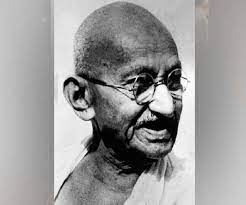VOL- 4, ISSUE- 2, PUNE RESEARCH TIMES (ISSN 2456-0960) JIF 3.18
4.2
Area of Article : ALL
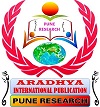
VOL- 4, ISSUE- 2, PUNE RESEARCH TIMES (ISSN 2456-0960) JIF 3.18
4.2

VOL- 4, ISSUE- 2, PUNE RESEARCH TIMES (ISSN 2456-0960) JIF 3.18
4.2.1 TIMES
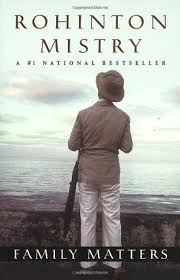
VOL- 4, ISSUE- 2, PUNE RESEARCH TIMES (ISSN 2456-0960) JIF 3.18
4.2.2 TIMES
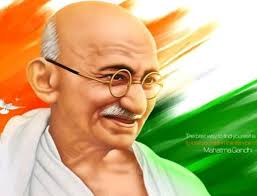
The mother India given birth to so many heroes in her
country. Gandhiji was also one of them. His educational idea’s based on love
peace and equity. He shines like a luminous star in the galaxy of
intellectuals.Gandhi’s educational philosophy is dynamic and realistic. Gandhi
is vision on education was truly civilized for the betterment of society as
well as whole country. Education not
only educate the students but brings a new change in the society. It reflects a
society’s fundamental assumption. His experience in South Africa not only
changed his out look ideology but also helped him to see the real picture of
country. Gandhiji’s educational
philosophy is dynamic and realistic. His vision on education was truly
civilized for the betterment of society as well as whole country.
Key Words: Women Education, illiteracy,
knowledge, complement of man, letters and speeches.
VOL- 4, ISSUE- 2, PUNE RESEARCH TIMES (ISSN 2456-0960) JIF 3.18
4.2.3 TIMES
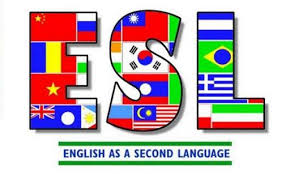
With the objective of keeping pace with the
globalization, it becomes quintessential to observe and realize the need and
importance of ever increasing demand of English. In recent years
English has achieved a lot of recognition as English is considered as
the common official language worldwide which has created a plethora of scope
for ample number of jobs across the world.
VOL- 4, ISSUE- 2, PUNE RESEARCH TIMES (ISSN 2456-0960) JIF 3.18
4.2.4 TIMES
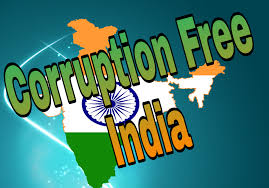
I dream of a corruption free India. A place where
everyone works hard and gets what he deserves. A place that gives equal
opportunity to everyone based on their knowledge and skills irrespective of
their caste, colour, creed or religion. A place where people don’t use other
people around to get accomplish their selfish motives. But alas, India is far
from this ideal place I imagine it to be. Everyone is so engrossed in earning
money and enhancing their lifestyle that they don’t mind using corrupt ways to
fulfill their dreams and ambitions. It is a common notion that those who work
with honesty are unable to reach anywhere. They hardly get any promotion and
continue to earn meagre salary. On the other hand, those who seek bribes and
use unfair means to accomplish their tasks climb up the ladder of success and
make a better living.
VOL- 4, ISSUE- 2, PUNE RESEARCH TIMES (ISSN 2456-0960) JIF 3.18
4.2.5 TIMES

Mahatma Gandhi once said that we were getting
education too expensive for a starving country. After the independence of
India, several efforts have been made to reform our system of education .There
has been a series of reforms and also a large scale expansion of education. All
of it has failed to satisfy requirements of our nation. The University Grants
Commission in India launched the scheme of vocationalisation of education in
1994. It has been found that
vocational education is not offered in lieu of general education but grows out
of it. Supplementing and enhancing main stream education is the goal of
vocational education .The main objective of vocational education is to fulfill
the manpower requirement for national development and social requirement for
employment.
VOL- 4, ISSUE- 2, PUNE RESEARCH TIMES (ISSN 2456-0960) JIF 3.18
4.2.6 TIMES
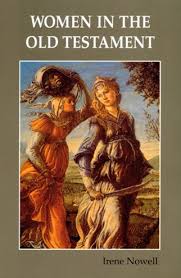
Both man and woman were made in the image of God. It
was a woman that was taken from the side of Adam to be a suitable mate, as Adam
was made first. Woman is called a “helper” to man, this is more than being an
assistant, a “helper” means a co-worker. When it comes to women and the concept
of submission in the Bible, it does not imply that she is inferior to man in
any way, but she is ordained to have a different position in relation to man,
each having distinct roles.Although women were treated in history in an
inferior way, this does not mean that those who did so were obeying the
commands of Scripture. There is huge difference in the way the Pharisees
treated women in Jesus’ day and how the Bible instructs us to treat women.
Certain Jews prayed in this time period, thank God I’m not a dog, a gentile or
a woman.This shows there attitude was not following the Biblical precedent, as
God gave to man a woman to be a necessary helper alongside him. Historically
women have played an important part in the history of Israel and God’s plan.
When Israel was enslaved in Egypt it was because of the determination of the
Hebrew women that disobeyed the Pharaoh’s command to kill the newborn boys that
brought in their deliverer.
VOL- 4, ISSUE- 2, PUNE RESEARCH TIMES (ISSN 2456-0960) JIF 3.18
4.2.7 TIMES
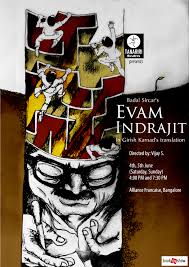
Sircar’s early plays such as Evam Indrajit, Baki
Itihas, Trigsha Shatabdi and Pagala Ghoda display his exceptional strength as
an avant-garde playwright. The plays explore man’s consciousness towards his
existential responsibilities, his profound sense of guilt for turning away from
them and leading an alienated life. Sircar thinks that the social relevance of
a play, for a sincere writer, is quite automatic.
VOL- 4, ISSUE- 2, PUNE RESEARCH TIMES (ISSN 2456-0960) JIF 3.18
4.2.8 TIMES
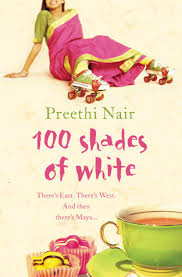
Food has been
widely recognised in areas
such as anthropology, sociology,
food science, semiotics, as
well as in literary,
film and cultural studies. Food
and eating mirrors the
making of a self and
reflects a detailed
and comprehensive image
of our identities. As
self-understanding and authentic existence are the chief objectives of any kind of philosophical
inquiry, especially in postmodern times, food becomes a valuable key to that.
The paper proposes to study Preethi Nair’s One Hundred Shades of White as
chronicle of such a journey spanning three generations of women through the
metaphor of cooking. Food is one of the most popular tools in the hands of
diasporic women writers to express their longing for as well as rejection and
finally acceptance of their home culture. The novel is an unforgettable
rendering of a mother and daughter’s search for identity and ‘wholeness’ in an
alien land and coming to terms with the ‘duality’ of their existence.
Keywords: British Asian Literature,
Diasporic literature, Women’s literature
VOL- 4, ISSUE- 2, PUNE RESEARCH TIMES (ISSN 2456-0960) JIF 3.18
4.2.9 TIMES
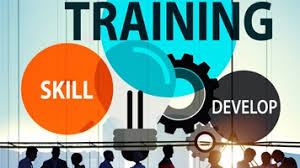
Rural India is the real face of our country as it
represents 68.9 percent of our population. It is important to engage the rural
youth in a productive way in tandem with their aspirations by providing them
credible opportunities for growth and well being. But in the globalized area,
firms and industries demand for more skills workers. In addition to this
technological change, particularly the development of Information and
Communication Technology (ICT) , is occurring at unprecedented speed, requiring
workers to have more and more complex cognitive skills than ever. Therefore it
is important to meet the challenges and prepare rural youth with the proper
education and skills they need. Although there are many programmes for their
development but it is important to note that all of these programme will be
successful only if they are implemented properly. This article is an attempt to
understand the problems and challenges of rural youth in the context of their
development and possible suggestions are given to overcome the problems by
Education and Skill Development.
Keywords: Rural, Youth, Education, Skill
Development, Challenges, Suggestions.
VOL- 4, ISSUE- 2, PUNE RESEARCH TIMES (ISSN 2456-0960) JIF 3.18
4.2.10 TIMES

Pimpri-Chinchwad (Pune) is the fastest growing city
for constructing flat in the real estate business so that it is a big scope for
builders’ for constructing various types of projects for selling the flat. It
is good opportunity for the customers to select various types of flats. People
are attracted towards Pimpri-Chinchwad city for making good career in the
various sectors available good job opportunities and huge scope for becoming
entrepreneurs and government also supports to startup the business. Customers
preferences are high for selecting 1 BHK, 2 BHK and 3 BHK flats on the basis of
income and budget of flat. It is found that Customers’ psychology and
perceptions are different while selecting flat in the different types of
projects.
Key words: Customers Perception, Selection of flat, Location, Floors, Area in
square foot.
VOL- 4, ISSUE- 2, PUNE RESEARCH TIMES (ISSN 2456-0960) JIF 3.18
4.2.11 TIMES

In a 1982 interview, Gayl Jones said that just like
most people, she felt “connections to home territory-connections that go into
one’s ideas of language, personality, landscape (Rowell 52). Born to Franklin
and Lucille Jones on November 23, 1949 in Lexington, Kentucky, Jones’early
“connections” with the South are reflected strongly in her personal life as
well as in her writing, which often brings Kentucky culture and characters to
life for the reader. Much of her desire to write came from her maternal
grandmother, Amanda Wilson, who wrote plays for church productions, as well as
from her mother, Lucille Jones, who wrote short stories, many of them in order
to entertain Gayl and her brother Franklin Jr. Jones says, “I have to say that
if my mother hadn’t written and read to me when I was growing up I probably wouldn’t
have even thought about it at all” (Rowell 53). In elementary school, several
of Jones’ instructors saw through her painfully shy exterior to the talented
author blooming within and encouraged her to continue writing.
VOL- 4, ISSUE- 2, PUNE RESEARCH TIMES (ISSN 2456-0960) JIF 3.18
4.2.12 TIMES

English as the second language in the foreign nations
is acquired by the students whose native language is not English is a
complicated process. Generally English language is taught by the teacher to the
students like any other subject; with this process of teaching such as Grammar
Translation method or Structural approach the teaching becomes teacher-
centred. Students hardly learn and they stop where the teacher stops. It
pressurises the students to memorise the grammar with set of rules. This ceases
their communicative English; significant point why many students are only good
at writing English but zero in spoken English. So the importance should be
given to Learning, Speaking, Reading and Writing skills rather concentrating on
only one. There are few methods which
are based on the learner’s autonomy; they are, Communicative Language Teaching,
The Silent Way, and The Natural Method etc. Students’ learning would grow
continuously with the latter case as it is student- centred approach. Also,
they involve themselves voluntarily in learning English language without a bit
of stress; with this the learner’s atmosphere is fulfilled with charisma.
Key Words Learner,
Autonomy, Activities, LSRW skills, Peer- learning, Teacher, Facilitator,
Involvement, Lesson plan, Consciousness, Student’s interest, Specific talent,
ability, Role played.
VOL- 4, ISSUE- 2, PUNE RESEARCH TIMES (ISSN 2456-0960) JIF 3.18
4.2.13 TIMES
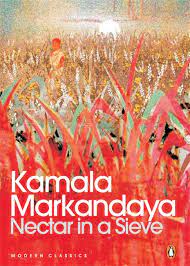
Kamala
Markandaya is one of the eminent Indo-Anglian novelists. Her works focus
basically on the life and culture of the rural India. ‘Nectar in a Sieve’ and
‘A Handful of Rice’ present an authentic picture of the same. The main themes
of the novel are hunger, poverty and exodus from the villages to town in search
of employment with a dream to satiate
hunger, wipe out poverty and carve out a distinct identity in the society. The
tragic predicament of rural India has been depicted with moving realism. It
envelopes lack of family planning, tradition, want for a son, crime,
unemployment, class conflict, lethargic attitude as dominant factors of the
Indian rural society. The novel presents Markandaya’s tragic vision of life
with the genuine concern for the miserable lot through the characters like
Ravi, Nalini, Jayamma etc. The tradition of the joint family system with its
merits and demerits is reflected through the family of Ravi. There is also a
cultural clash between rural culture represented by Ravi, a poor and hungry boy
and urban culture through the life of Damodar, a notorious criminal. The novel
portrays how desire for a luxurious life also forces one to follow anti-social
activities. Ravi is drawn towards Damodar, a criminal to comfort himself from
economic strain. Despite Kamala Markandaya’s rich experience of the west, rural
Indian forms the basis of her creative urge. In this research paper a modest
attempt has been made to analyze the rural society. Like a coin this society,
too has two sides : positive as well as negative. Markandaya, most outstanding
woman novelist of post-independent India, interpreted a colourful picture of
rural society with its various drawbacks, positive aspects and its
confrontation with urban society. The present research paper also highlights,
the vision of rural life and portrays how the wind of industrialisation blows
across rural India and causes the dislocation of tradition.
Keywords : Hunger, poverty, unemployment,
industrialisation, dislocation, rural society, positive-negative effects.
VOL- 4, ISSUE- 2, PUNE RESEARCH TIMES (ISSN 2456-0960) JIF 3.18
4.2.14 TIMES
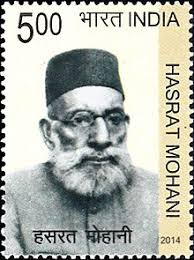
Maulana Fazal-ul-Hasan, better known as Hasrat Mohaani was a dedicated freedom-fighter, a consummate national politician, an active socialist-Muslim, a devoted sufi and a fearless and outspoken journalist. An acclaimed poet and critic of his own ‘Oriental’ sensibility, Mohaani also held his own as an expert in poetics and as a critical commentator on Ghalib. In short, Mohaani in his time exemplified the multi-faceted, many-sided ‘complete man’. His political activities and feats, the daring and courage shown by him in the course of the Indian freedom struggle are matters lauded by all time greats of the Indian National Movement Mahatma Gandhi, Maulana Mohammed Ali Johar, Pandit Nehru, Subhash Chandra Bose, Maulana Abul Kalam Azad, Dr. Rajendra Prasad, Dr. Zakir Hussain, among others. This research paper is an attempt to deal with the vivid faces of Hasrat Mohaanis personality as a poet and a freedom fighter.
Keywords : Hasrat Mohaani, Journalist, Freedom Fighter,
Urdu Adab, Nigar, Aaj-Kal, Urdu-e-Moalla, National Movement.
VOL- 4, ISSUE- 2, PUNE RESEARCH TIMES (ISSN 2456-0960) JIF 3.18
4.2.1 टाईम्स
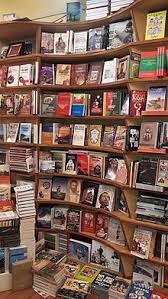
ejkBh ok³~e;ssfrgklys[kukyk 115 o”kkZaph
ijaijk vkgs- ;k dkGkr ok³~e;ssfrgklys[kukph okVpky la[;kRed n`”Vhus pkaxyh
>kyh vkgs- jktokMs] Hkkos] ikaxkjdj ;kaP;kiklwu lq: >kysyh ijaijk vktgh
nenkji.ks pkyw vkgs- rjhgh dkgh viokn oxGrk gs ok³~e;ssfrgkl vusd iz’ukaph
mRrjs nsr ukghr- R;ke/;s rksprkspi.kk fnlwu ;srks- e/;;qxhu ok³~e; gs ekSf[kd
iajijsus vkysys vkgs- R;k lanHkkZar vusd iz’u fuekZ.k gksrkr- RkRdkyhu
ok³~e;izdkj dk fuekZ.k >kys\ R;kaph ok< dk o d’kh >kyh\ brds ok³~e; ;k
dkGkr fuekZ.k >kys] rj YkqIr fdrh >kys vlsy\ ;kyk dkgh e;kZnkgh vkgsr-
ijarq ;kapk ‘kks/k ok³~e;sfrgklkr ?ksrysyk fnlr ukgh- ;koj Jh-ja-dqyd.khZ Eg.krkr
dh] ^^dkGizokgkr lkfgR;kyk uoh oG.ks dk ykxyh\ dkgh ok³~e;izdkj fof’k”V dkGkrp
dk mn;kyk vkys- ;k iz’ukaph ppkZ ok³~e;ssfrgklkr lglk vk<Gr ukgh-** rlsp /keZ&iaFk&laiznk; dk fuekZ.k >kys\ HkfDrlkfgR;kP;k pGoGh dk
mn;kl vkY;k\ ;kps dkj.k ijdh; jktoV vkgs] vls dkgh ok³~e;ssfrgkldkj lkaxrkr-
ijarq eqGkrp Hkkjrh; laLÑrh gh ^vk/;kfRed* vkgs- iwohZP;k dkGkr
KkuihBkps&Kkunkukps dk;Z gs ^laiznk;* djr gksrs- rhp ijaijk iq<s pkyr
vkyh dk\ ;k lokZaph mRrjs ;k ikjaikfjd ok³~e;ssfrgklkr dkgh va’khp feGrkr-
VOL- 4, ISSUE- 2, PUNE RESEARCH TIMES (ISSN 2456-0960) JIF 3.18
4.2.2 टाईम्स

vkS|ksfxd
dzkafreqGs 18 O;k “krdkr HkkaMoy”kkgh O;oLFkspk tUe o fodkl >kysyk vk<Gwu
;srks- dkj[kkunkjhpk mn;]oLrqps eksB;k izek.kkr mRiknu cktkjisBkapk foLrkj]
cktkjisBsrhy vl.kkjh rhoz Li/kkZ] uQs[kksjh] xzkgdkaps gks.kkjs “kks’k.k o
fiGo.kqd] xjhc&Jhear ;kaP;krhy ok<r tk.kkjh fo’kersph njh vkf.k R;krqu
fuekZ.k gks.kkjk dyg] lai o VkGscaanhP;k
ek/;ekrqu fuekZ.k gks.kkjk vlarks’k ;k loZ xks’Vhapk lektO;oLFksoj >kysyk
nq’kifj.kke ;kph loZ v;ksX; cktq lektkiq<s vkyh- foKkukP;k ek/;ekrqu izxr
>kysY;k vkS|ksfxd o HkkaMoy”kkgh vFkZO;oLFksrhy “kks’k.k fo:/nph ,d O;oLFkk
Eg.kqu lgdkj ;kpk vk/kkj ?ks.;kr vkyk- HkkaMoy”kkgh vFkZO;oLFksps nks’k T;k
i/nrhus lektkyk tk.koq ykxys- R;k izek.kkr lgdkjkpk fodkl eksB;k izek.kkr gksm
ykxyka- txkrhy cgqrsd ns”kkae/;s lgdkjkpk voyac dj.;kr ;sÅ ykxyk- 20 O;k “krdkr
lgdkjkpk vf/kd foLr`r izek.kkr fodkl >kysyk fnlqu ;srks- 20 O;k “krdkP;k
mRrjk/kkZr ^lgdkj* gh lkekftd vf/k’Bku vlysyh vFkZO;oLFkk let.;kr vkyh-
vkS|ksfxd dzkafreqGs lgdkjkpk fodkl gksÅu vk/kqfud lgdkjh pGoGhl pkyuk feGkyh
tkxfrd ikrGhoj lq/nk lgdkj {ks=kl vuUulk/kkj.k LFkku izkIr >kys vkgs-
VOL- 4, ISSUE- 2, PUNE RESEARCH TIMES (ISSN 2456-0960) JIF 3.18
4.2.3 टाईम्स

प्रबोधन हे वैचारिक आणि बोद्धिक कृत्याचाद्वारे होणारे परिवर्तन आहे.आणि या परीवर्तनामागे महत्वाचा इतिहास दडलेला असतो.प्रबोधनाचा माध्यमातून आज जगात अनेक क्रांत्या घडून आलेल्या आहे.समाजाच्या बंदिस्थ गुलामगिरीतून आणि जातीसंस्था तसेच आर्थिक पिळवणूकीतुन मुक्त करण्यासाठी हा वैचारिक लढा सर्वप्रथम युरोपात लढला गेला.प्राचीन काळापासून समाजाचा सुधारणेसाठी आणि व्यवस्थेसाठी राजकीय क्षेत्राबरोबर विज्ञानाने देखील यात महत्वपूर्ण योगदान दिलेले आहे.सोळाव्या शतकात मार्टिन लुथर याने संत ऑगस्टीन यांचे द सिटी ऑफ गोड आणि बायबल मधील वचन ‘धर्मी मनुष्य विश्वासाने जगेल’ या वाचनाने प्रेरित होऊन हजार वर्षापासून पोपच्या आर्थिक गुलामगिरीत जकळलेल्या युरोपियन जनतेला आधात्मिक प्रबोधनाच्या माध्यमातून मुक्त केले.आणि संपूर्ण जगात प्रबोधनाची सुरुवात झाली.फ्रान्सिस बेकन याने तर विज्ञान आणि धर्म हे एकमेकांना कसे पूरक आहे हे दाखवून दिले.गलिलिओ कोपर्निकस,न्यूटन,अल्बर्ट आईन्स्टाईन,यांनी विज्ञाणात तर,जीन जैक रुसो,कार्ल मार्क्स,लीयोपाल्ड रंके,मोन्तेस्क्यू,दिडेरो ,यांनी वैचारिक घटकात प्रबोधन घडवून आणले.त्यामुळे फ्रेंच,रशियन आणि विकसनशील देशात राष्ट्रवादी क्रांत्या घडून आल्या.तसेच ख्रिस्ती प्रबोधनकारांनमध्ये मार्टिन ल्युथर.जोनाथन एडवर्ड,जॉर्ज वाईटफिल्ड,जॉन कॅल्विन,जॉन हस,आणि जॉन बनियान,यांनी प्रबोधनाची आध्यात्मिक सुरुवात करून इतिहासात एका नव्या अध्यायाची सुरुवात केली.तसेच आध्यत्मिक प्रबोधन म्हणजे काय,ख्रिस्ती प्रबोधनकारांनी प्रबोधन
VOL- 4, ISSUE- 2, PUNE RESEARCH TIMES (ISSN 2456-0960) JIF 3.18
4.2.4 टाईम्स
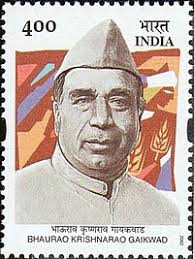
VOL- 4, ISSUE- 2, PUNE RESEARCH TIMES (ISSN 2456-0960) JIF 3.18
4.2.5 टाईम्स
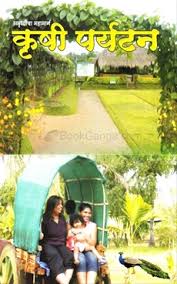
आधुनिक काळात ‘कृषी-पर्यटन’ जगामधील शहरी लोकांमध्ये
लोकप्रिय होत आहे. कृषी-पर्यटनामुळे शेतक-यांना त्यांच्या शेतामधून अतिरिक्त
उत्पन्न मिळते त्याचबरोबर स्थानिक लोकांना रोजगार सुद्धा प्राप्त होतो.
‘कृषी-पर्यटन’ ही अतिशय साधी संकल्पना आहे. यामध्ये शहरी पर्यटक एक किंवा दोन
दिवसाकरिता शेतावर मुक्काम करतात. तेथील
शेती मधील कामाचा अनुभव घेतात बैलगाडी सवारी, ट्रक्तर सवारीचा अनुभव घेणे,
पतंग उडवणे, तेथील परंपरागत खाद्य पदार्थांचा आस्वाद घेणे, परंपरागत कपडे परिधान
करणे, तेथील स्थानिक संसकृती समजून घेणे, स्थानिक संगीत वाद्य व नृत्याचा आस्वाद
घेणे, शेतातील ताजे पदार्थ खरेदी करणे इ. गोष्टींचा अनुभव घेतल्या जातो. महाराष्ट्रामध्ये
विदर्भातील शेतकरी जास्त आत्महत्या करतात त्यामुळे पश्चिम महाराष्ट्राच्या तुलनेत
येथील शेतकऱ्यांसाठी ‘कृषी-पर्यटन’ हा व्यवसाय जास्त गरजेचा आहे. भारतामध्ये
महाराष्ट्र राज्य ‘कृषी-पर्यटन’
व्यवसायाच्या विकासामध्ये अग्रेसर आहे. भारतातील कृषी अर्थव्यवस्थेमध्ये
‘कृषी-पर्यटन’ व्यवसायाची संकल्पना अतिशय महत्वपूर्ण आहे कारण कृषी-पर्यटन
मध्ये स्थानिकांचा मुख्यत: गरीब
शेतकऱ्याचा सहभाग वाढल्यास स्थानिक
अर्थव्यवस्थेचा विकास होऊन गरीबी कमी होण्यास मदत होते. कृषी-पर्यटन हे
शेतकऱ्यांचे अतिरिक्त उत्पन्नाचे साधन असून, यामुळे रोजगाराच्या नवीन संधी उपलब्ध
होते तसेच शैक्षणिक मूल्य व सांस्कृतिक आदानप्रदान होते.
VOL- 4, ISSUE- 2, PUNE RESEARCH TIMES (ISSN 2456-0960) JIF 3.18
4.2.6 टाईम्स

±ÉÉäEò|ɶÉɺÉxÉÉiÉ
{ɪÉÉÇ´É®úhÉÉi¨ÉEò +vªÉªÉxÉÉSÉÒ ºÉÖ¯û´ÉÉiÉ ºÉ´ÉÇ|ÉlÉ¨É <.ºÉ. 1947 ºÉɱÉÒ
VÉÉìxÉ MÉÉìºÉ ªÉÉÆxÉÒ Eäò±ÉÒ (Avasthi &
Avasthi,2004:24). ªÉɤɮúÉä¤É®ú ®úÉì¤É]Çõ b÷½þɱÉ, ®úÉì¤É]Çõ
¨É]ÇõxÉ ªÉÉ Ê´ÉSÉÉ®ú´ÉÆiÉÉxÉÒ½þÒ {ɪÉÉÇ´É®úhÉÉi¨ÉEò oùι]õEòÉäxÉÉSÉÉ +¦ªÉɺÉ
Eäò±ÉÉ +ɽäþ. ®úÉì¤É]Çõ b÷½þÉ±É ªÉÉÆxÉÒ ºÉÆEò®ú-ºÉÉƺEÞòÊiÉEò +vªÉªÉxÉÉSªÉÉ
+ɴɶªÉEòiÉä´É®ú ¦É®ú Ênù±ÉÉ iɺÉäSÉ |ɶÉɺÉEòÒªÉ ºÉÆ®úSÉxÉÉ +ÉÊhÉ
´ªÉ´É½þÉ®úÉiÉÒ±É {ɪÉÉÇ´É®úhÉÉSªÉÉ |ɦÉÉ´ÉÉ´É®ú ¦É®ú Ênù±ÉÉ +ɽäþ. iªÉÉÆSªÉÉ
¨ÉiÉä, ±ÉÉäEò|ɶÉɺÉxÉ VªÉÉ ‘®úɹ]ÅõÒªÉ ¨ÉxÉÉäÊ´ÉYÉÉxÉ’ +ÉÊhÉ VªÉÉ ‘ºÉɨÉÉÊVÉEò,
ºÉÉƺEÞòÊiÉEò +ÉÊhÉ ®úÉVÉEòҪɒ {ɪÉÉÇ´É®úhÉÉiÉ Ê´ÉEòʺÉiÉ ½þÉäiÉä. iªÉÉÆSªÉÉ
|ɦÉÉ´ÉÉ{ÉɺÉÚxÉ +ʱÉ{iÉ ®úɽÚþ ¶ÉEòiÉ xÉɽþÒ (Sharma
& Sadana,2010:108). ªÉÉ ºÉ´ÉÇ Ê´ÉSÉÉ®ú´ÉÆiÉÉƨÉvªÉä
±ÉÉäEò|ɶÉɺÉxÉÉiÉ {ɪÉÉÇ´É®úhÉÉi¨ÉEò oùι]õEòÉäxÉÉʴɹɪÉÒ Ê´É¶Éä¹É ´É
=±±ÉäJÉxÉÒªÉ ªÉÉäMÉnùÉxÉ Ê®úMVÉ ªÉÉÆSÉäSÉ +ɽäþ. ´ÉºiÉÖiÉ: 1950 SªÉÉ xÉÆiÉ®úSÉ
±ÉÉäEò|ɶÉɺÉxÉÉiÉÒ±É {ɪÉÉÇ´É®úhÉÒªÉ +vªÉªÉxÉÉSÉÒ |ɺiÉÖiÉiÉÉ {Éɽþ´ÉªÉɺÉ
ʨɳýiÉä. ½þÉ EòɱÉJÉÆb÷ +¨ÉäÊ®úEäòiÉÒ±É iÉÉÆÊjÉEò ºÉ½þɪªÉiÉÉ EòɪÉÇGò¨É
Ê´ÉEòɺÉÉSªÉÉ |ÉÉ®ÆúʦÉEò EòɳýÉiÉ ½þÉäiÉÉ. iɺÉäSÉ nÖùºÉªÉÉ
¨É½þɪÉÖrùÉxÉÆiÉ®ú º´ÉiÉÆjÉ ½þÉähÉɪÉÉ xÉ´ÉÒxÉ ®úɹ]ÅõÉiÉÒ±É Ê¦ÉxxÉʦÉxxÉ
ºÉÆ®úSÉxÉÉ´É®ú ʦÉxxÉ-ʦÉxxÉ ºÉɨÉÉÊVÉEò {ÉÊ®úκlÉiÉÒSÉÉ {Éb÷hÉÉ®úÉ |ɦÉÉ´É ½þÉ
+¦ªÉɺÉEòÉÆSªÉÉ +vªÉªÉxÉ +ÉÊhÉ Ê±ÉJÉÉxÉÉºÉ |Éä®úEò `ö®ú±ÉÉ +ɽäþ. <.ºÉ.
1961 ¨ÉvªÉä Ê®úMVÉxÉä +É{ɱªÉÉ ‘The
Ecology of Public Administration’ ªÉÉ OÉÆlÉɨÉvªÉä
±ÉÉäEò|ɶÉɺÉxÉ +ÉÊhÉ {ɪÉÉÇ´É®úhÉ (VªÉɨÉvªÉä ½äþ Ê´ÉEòʺÉiÉ ½þÉäiÉä)
ªÉÉÆSªÉÉiÉÒ±É {É®úº{É®ú ÊGòªÉÉÆxÉÉ iÉÉè±ÉÊxÉEò oùι]õEòÉäxÉÉiÉÚxÉ Ê´É¶±ÉäʹÉiÉ
Eäò±Éä +ɽäþ.
VOL- 4, ISSUE- 2, PUNE RESEARCH TIMES (ISSN 2456-0960) JIF 3.18
4.2.7 टाईम्स
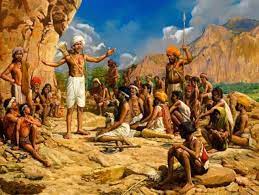
okLro
esa lkearokn dsoy jktiwrksa dk jkT; gh ugha Fkk dsoy Bkdqjksa dk jkT; gh ugha
Fkk ;g ,d ,slk jkT; Fkk ftlesa Åaph tkfr ds yksx fuez tkfr;ksa dk 'kks"k.k
djrs FksA e/;dky ns'k dk ,slk dky jgk gS tc jktiwrksa dk 'kklu pyrk Fkk eqxydky
ds ckn e/;dky vk;k bfrgkldkj dgrs gSa fd xqIrdky Hkkjr dk Lo.kZ;qx Fkk Lo.kZ;qx
dk rkRi;Z ;g gqvk fd bl ;qx esa jktkvksa&egkjktkvksa dk 'kklu pyrk Fkk
pUæxqIr ekS;Z vkSj g"kZo/kZu bl Lo.kZ;qx ds iqjks/kk FksA bu jktkvksa
egkjktkvksa us vke vkneh dk [kwc 'kks"k.k fd;k vkSj buds ckn esa eqlyeku
vk;s eqxyksa us rks bl ;qx esa dsoy 'kks"k.k ugha fd;k mUgksaus /keZ
ifjorZu Hkh fd;k vc bl ns'k ds vanj nks çdkj ds /kekZoyEch gks x;s ,d rjQ rks
tkfr O;oLFkk Fkh vkSj nwljh rjQ vYila[;d eqlyeku Fks bl ;qx esa çkjaHk esa gh
oV x;k ,d Hkkx vYi la[;dksa dk ;kuh eqlyekuksa dk vkSj nwljk Hkkx fgUnqvksa dk
FkkA
VOL- 4, ISSUE- 2, PUNE RESEARCH TIMES (ISSN 2456-0960) JIF 3.18
4.2.8 टाईम्स
